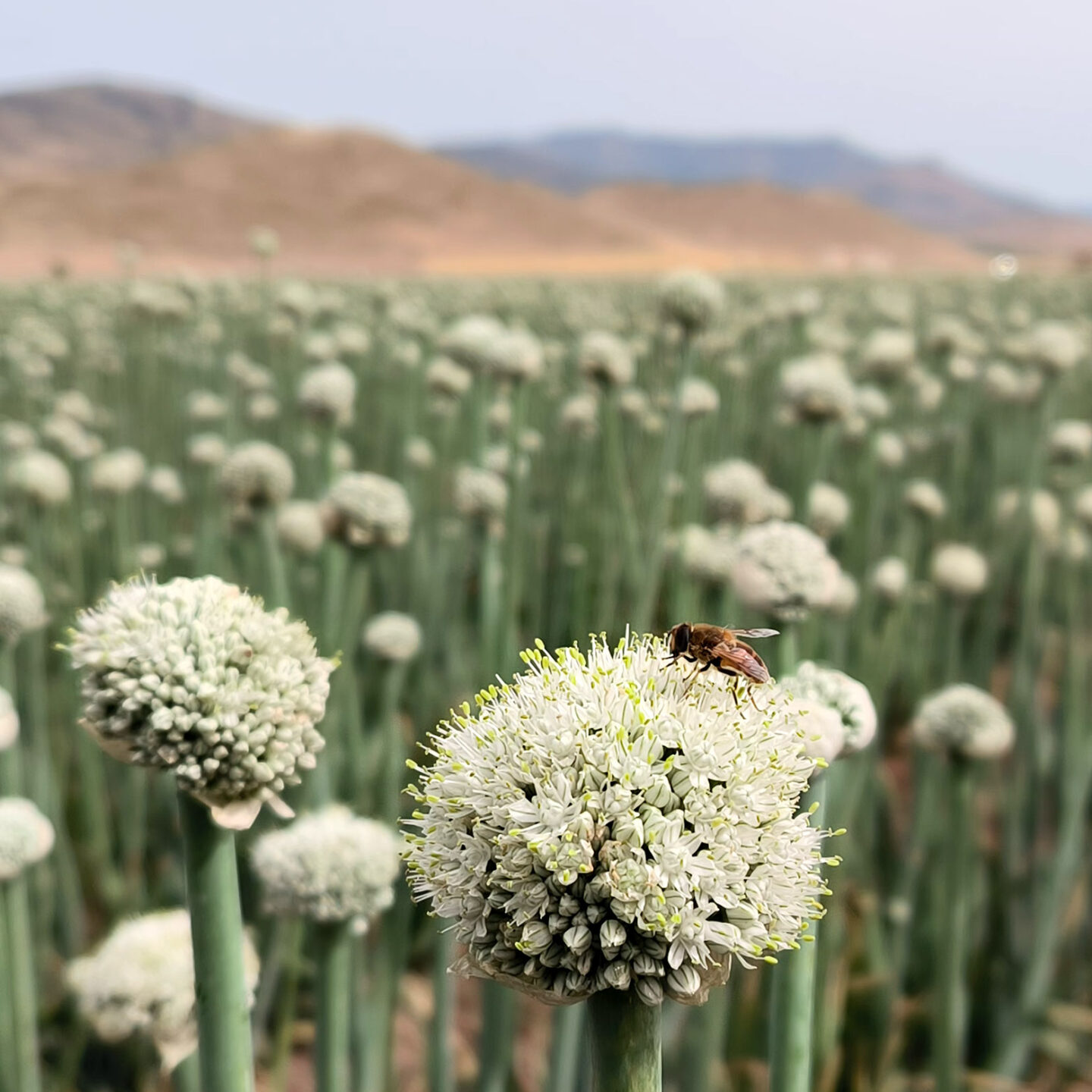Pollination in open field crops
Polyfly hoverflies have also proven to be effective pollinators in open-field agriculture, offering a sustainable solution for extensive farming systems.
Ongoing initiatives and trials in regions such as Australia and New Zealand aim to establish hoverflies as alternative pollinators in field crops, particularly in areas where:
- There is a chronic pollination deficit.
- The availability of traditional pollinators, such as bees and bumblebees, is limited or nonexistent.
- Extreme weather conditions reduce the efficiency of other pollinators.
Thanks to their adaptability to a wide temperature range and their ability to remain active under cloudy or windy conditions, hoverflies represent a reliable and resilient alternative for open-field crops.
Key benefits of using our hoverflies in open-field systems include:
- Greater pollination stability and reliability during adverse weather seasons.
- Reduced risk associated with relying solely on a single pollinator type.
- Contribution to agricultural biodiversity by attracting other beneficial insects to crop ecosystems.
The integration of hoverflies into open-field systems is part of our commitment to a more productive, sustainable, and climate-resilient agriculture.
Light Conditions
Our hoverflies maintain pollination activity under a wide variety of lighting conditions, including artificial light. This adaptability makes them an ideal option for new forms of high-tech agriculture and controlled environments such as:
- Various LED light spectrums.
- Indoor and vertical farming systems.
- Low-light or artificially lit conditions.
